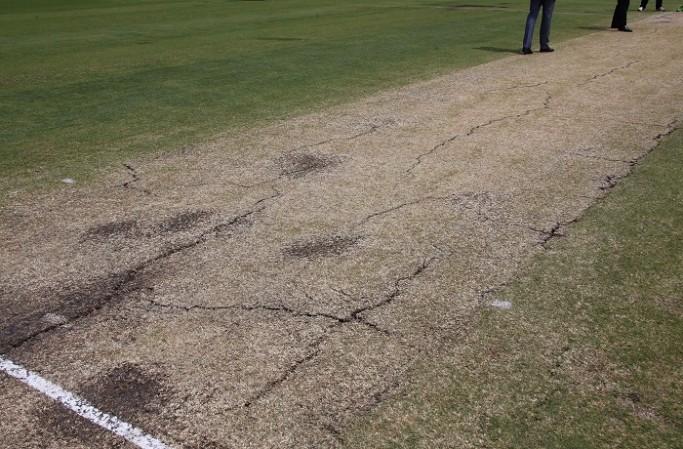
Test matches may not be as popular as ODI or T20 cricket, but it is longer format of the game, which is said to the pinnacle test for any cricketer. The format played in whites, which can run upto five days, demands teams to play consistent cricket, and the 22 yard strip always play an important role in the five-day contest.
Depending from country to country, the nature of the playing surface differs. Countries like England, Australia, South Africa and New Zealand might have something for the seamers while spinners rule the roost in the sub-continent, mostly, with the pitch wearing and tearing on the fourth and fifth day.
The recently concluded three-match Test series between India and New Zealand witnessed spinners being dominant, but it was not all about the slower bowlers only. The first Test match, which took shape in Kanpur, was a good wicket, where there was something for everyone. The seamers got rewards for bending the back while the spinners, as expected, came into play as well. The batsmen scored runs after getting in.
The second Test match in Kolkata proved to be even more exciting with pacers getting assistance from the pitch. The final Test in Indore was also interesting, with the pitch gradually assisting the spinners in the further stages of the match.
India won the series comfortably, winning all the three matches by 150 runs or more. But that is history, and India will hope to maintain that winning record intact as they go against England in an intriguing five-match Test series. The pitches, like in the past tours, will always come into equation, and here is a look at the kind of pitches, which one might get in the India-England series.
The five-match Test series will start in Rajkot on Wednesday, and there is a bit of grass left -- as I write -- on the pitch, which might be trimmed as much as possible before the game starts tomorrow. And if that happens, one can expect some turn, and players like Ravichandran Ashwin and Ravindra Jadeja are dangerous in such conditions.
The pitch for the second Test in Vizag will be much more interesting especially after the 22 yard surface had come into scrutiny following wickets falling like pins in a Ranji game. There were talks that they might not be allowed to host the India-New Zealand fifth ODI and this second Test match also came into question, but the pitch was shown green signal by BCCI curator for both the matches. The pitch will have a decent mix of clay and red soil for the match, which should once again support the bowlers.
But, the third Test match in Mohali might not be something, which would please the India bowlers. Mohali has produced pitches, which assist the seamers, and sometimes with green top as well. The third Test could be a strong test for batsmen from both teams as the conditions in the northern part of India will be heading towards winter.
The fourth and fifth Test, which will be played at Wankhede Stadium and MA Chidambaram Stadium, is expected to assist more of the spinners. But, one never knows if the curators throw a bouncer to surprise the two teams, especially India.
Irrespective of the pitches that will be laid in the five venues, bowlers have to be patient and batsmen have to show character and dig deep to steer their team to victory.

















